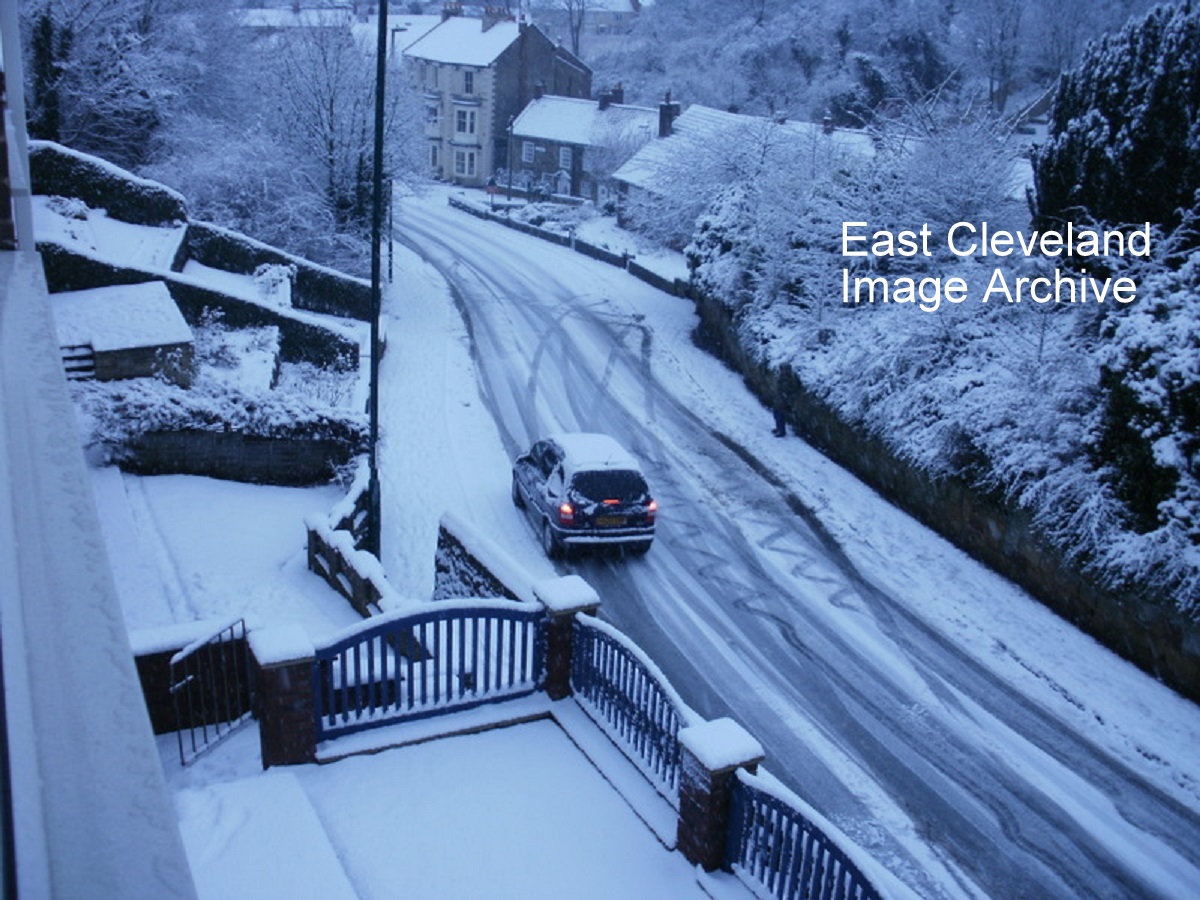
Chapel Bank Loftus looks as though some traffic has had a bit of a struggle to get up the bank with the snow.
Image courtesy of Julie Morrison.
|
|
||
 Chapel Bank Loftus looks as though some traffic has had a bit of a struggle to get up the bank with the snow. 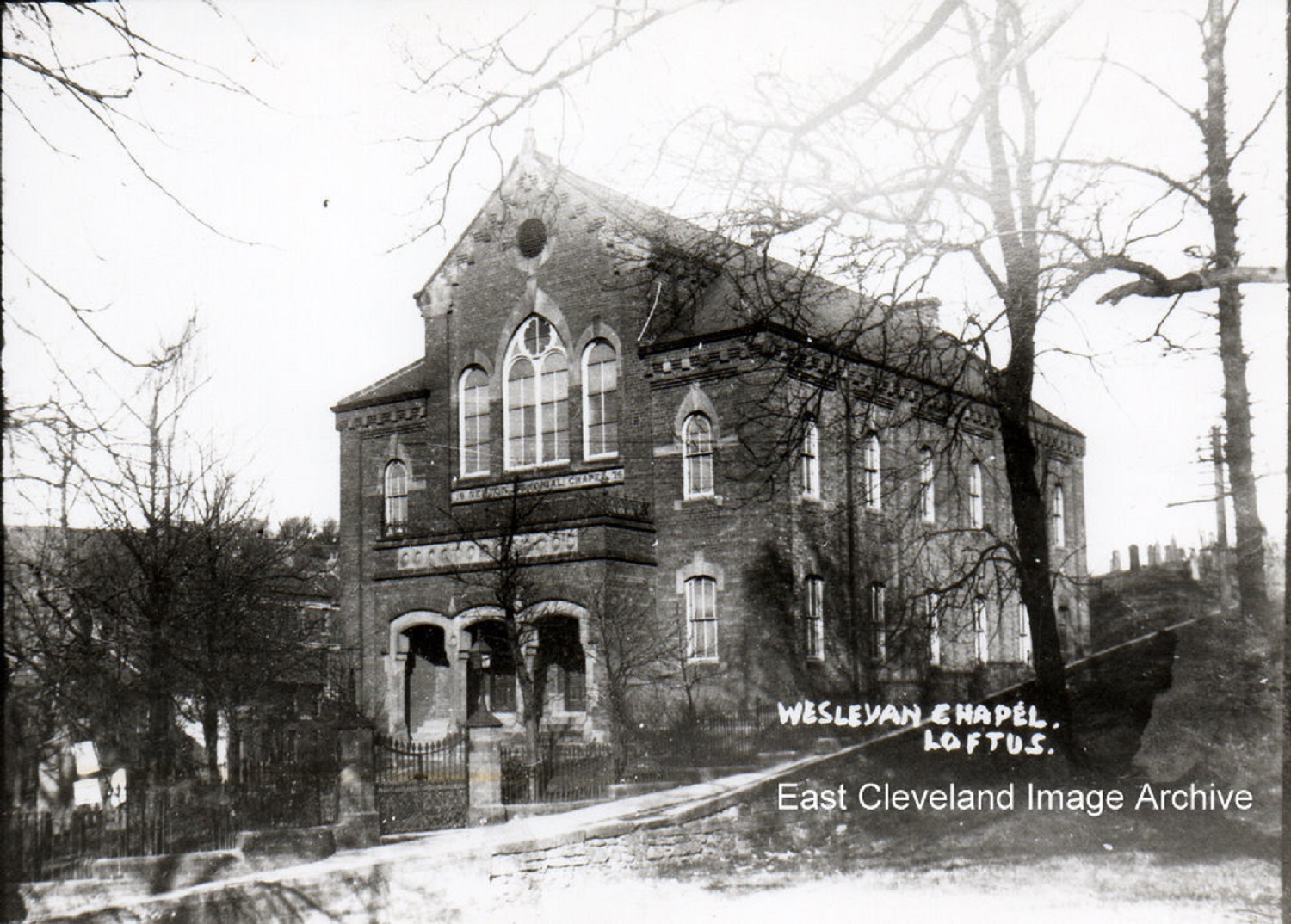 A lovely clear photograph of Newton Memorial Chapel we can even see some of the head stones in the cemetery behind it, a beautiful building; such a pity it was bombed on 15th March 1941 at 4.48am. (Bombing information from Bill Norman’s – Wartime Teesside Revisited). Quoted verbatim from Bulmer’s Directory Norman Patton advised: ”Newton Memorial Chapel was built in 1876, at a cost of £3,564. It is a handsome brick edifice with freestone facings, and will accommodate 900 persons. In 1885 the front was altered and improved at a cost of £405.” It was named after the Reverend Robert Newton of Roxby (1780 – 1854) who was a travelling Wesleyan minister and four times President of the Wesleyan Conference. The chapel of 1876 was built to replace a more basic built first erected in the early 1800s, Methodism in Loftus dates back to the days of John Nelson, who ”roused the inhabitants with his stirring appeals”. Norman Patton further tells us: ”As far as I am aware, no one was killed by the bomb which fell on the open space/recreation field at the rear of what used to be the United Bus depot. Massive pieces of earth were hurled into the air and caused collateral damage to several houses in Tees Street. One such house was the home of my Great Grandmother Elizabeth Ann Hicks (at No 29), which she shared with many other family members. Although their home was severely damaged none of the seven occupants was injured. All needed to be rehoused with other family members in the district for 18 months while repairs were carried out.” Image courtesy of several sources, thanks to Norman Patton for this information. 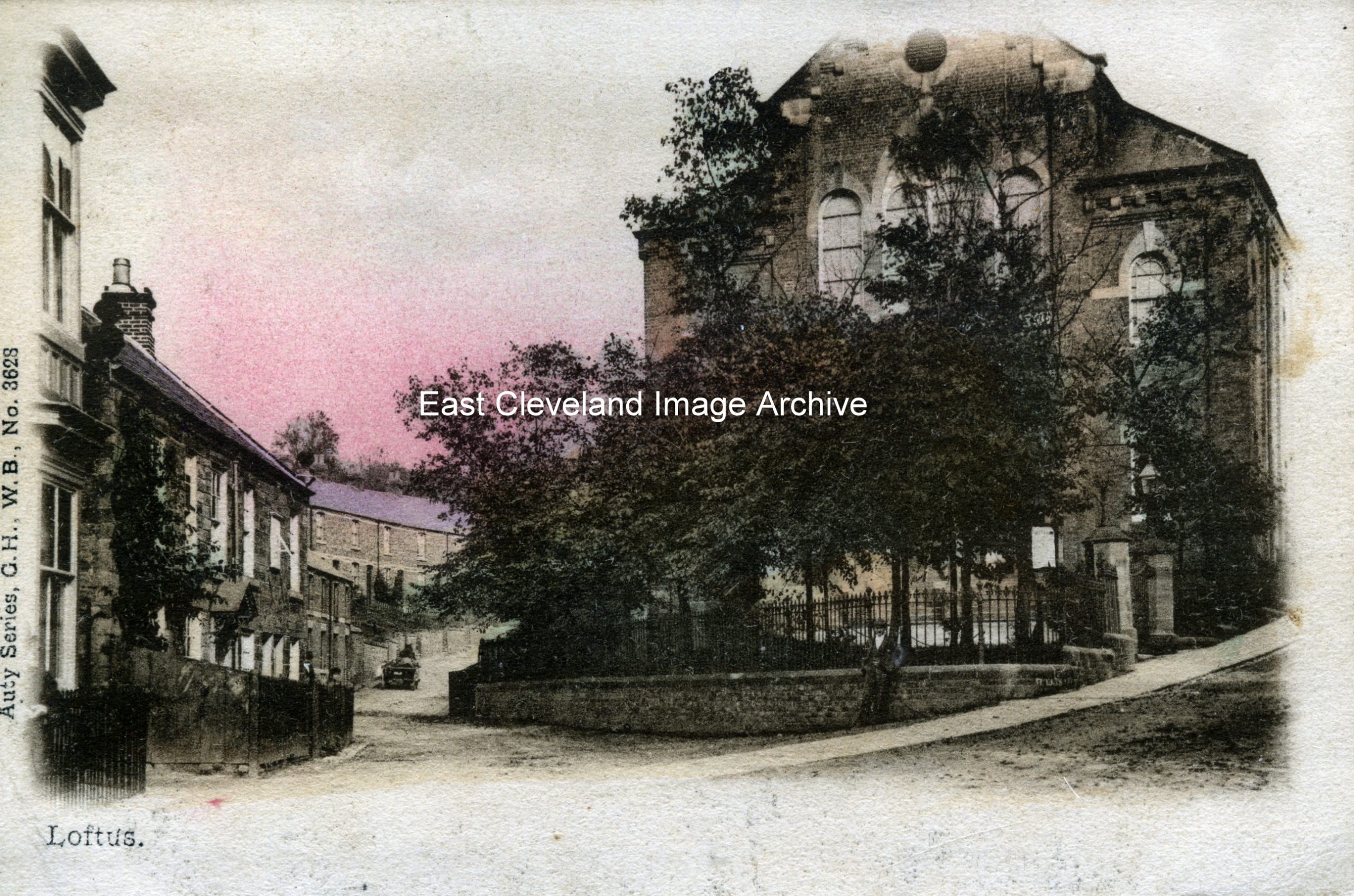 A lovely tinted Auty series postcard of East Crescent showing the Chapel on the bank and a horse and cart making their way up East Crescent. Wonder what he had on the cart? 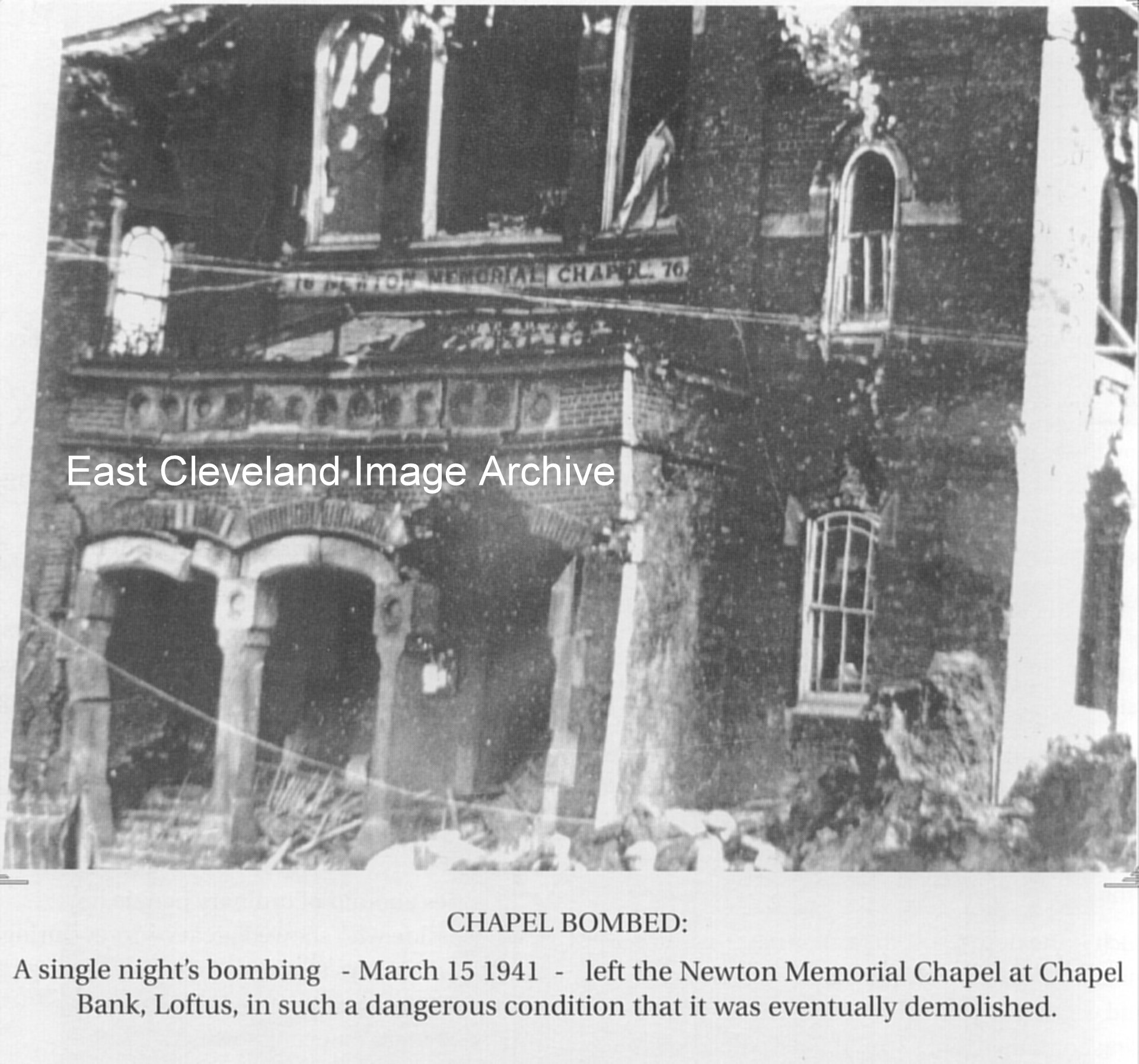 The text with the image says it all. A beautiful building destroyed – there is one consolation, it could have hit any of the surrounding dwelling places – with probably more disastrous consequences! Image and in formation courtesy of Jean Wiggins. 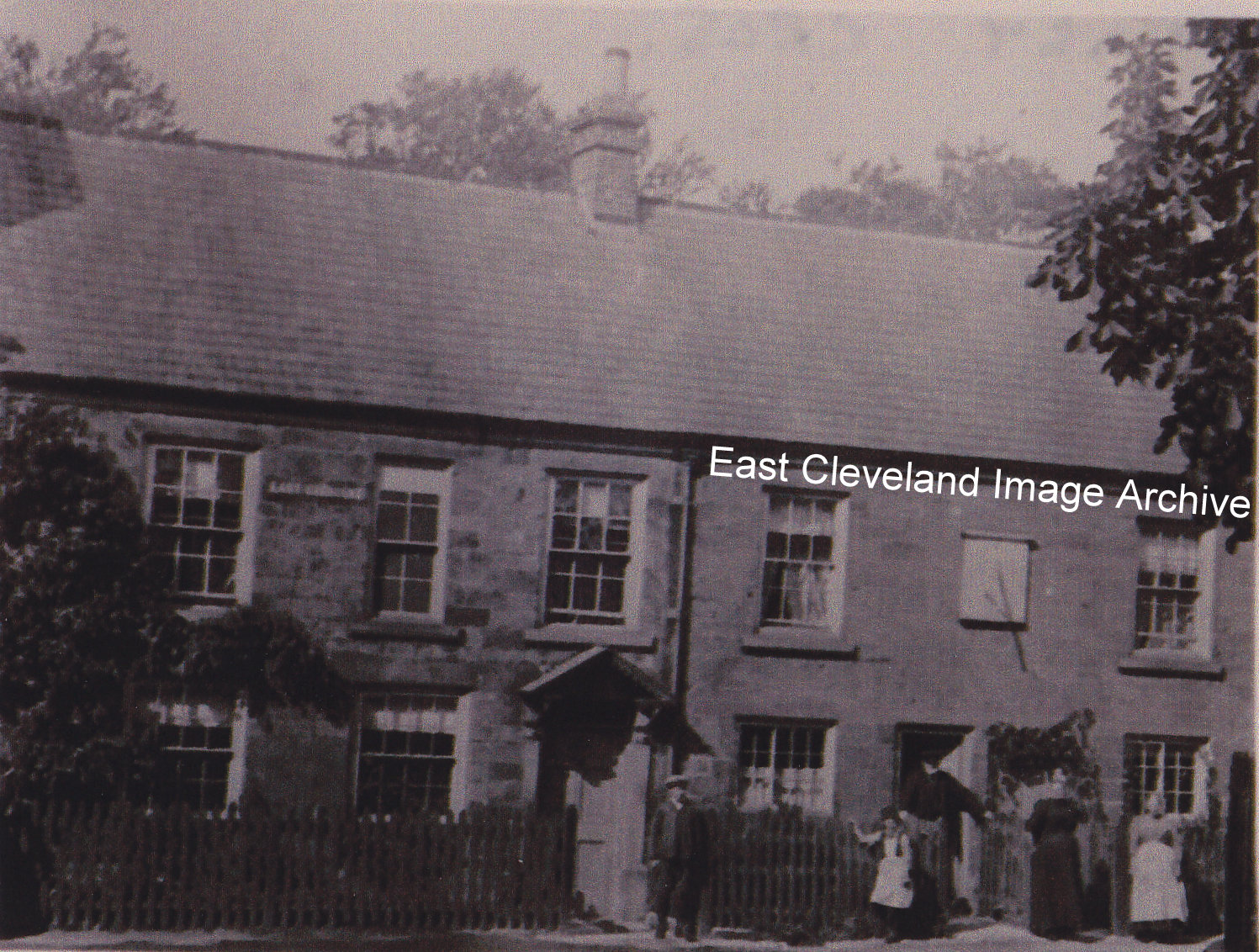 An early photoraph of East Crescent; with 1 East Crescent (also known as Cromwell House) in the left photograph and for a long time was home to the Lindsey family, Joe, Harold and Bernard the builders and their parents. The house got the name because Oliver Cromwell was suppose to have stopped there, the picture on the Arlington Hotel sign is that of Cromwell. The house is an early 18th Century dwelling which was once used by Roman Catholics as a secret place of worship, when their religion was proscribed, perhaps as Cromwell was the antithesis of Roman Catholics his name was used to describe a safe house? It once contained stained glass from Handale Priory and still includes stone taken from there (from Loftus Town Trail). John Stockwell tells us: ”Hugh W. Cook of Redcar writing of his meeting with the Dowager Marchioness of Zetland at Marske House in 1933, (‘The Cleveland Standard’: 07/01/1933) tells of ‘Some very fine stained glass window glass was also pointed out to me, some of which came from Cromwell’s House at Loftus’. John comments: ” If the original glass came from Handale this would perhaps explain the interest in acquiring it.” Holly Enticknap has happy memories having lived in the house and of :”A neighbour from number 3 called Dennis, sitting on his doorstep with his two dogs; one called ‘Rip'”. Image courtesy of Eileen Hicks; also thanks to John Stockwell and Holly Enticknap for for the updates. 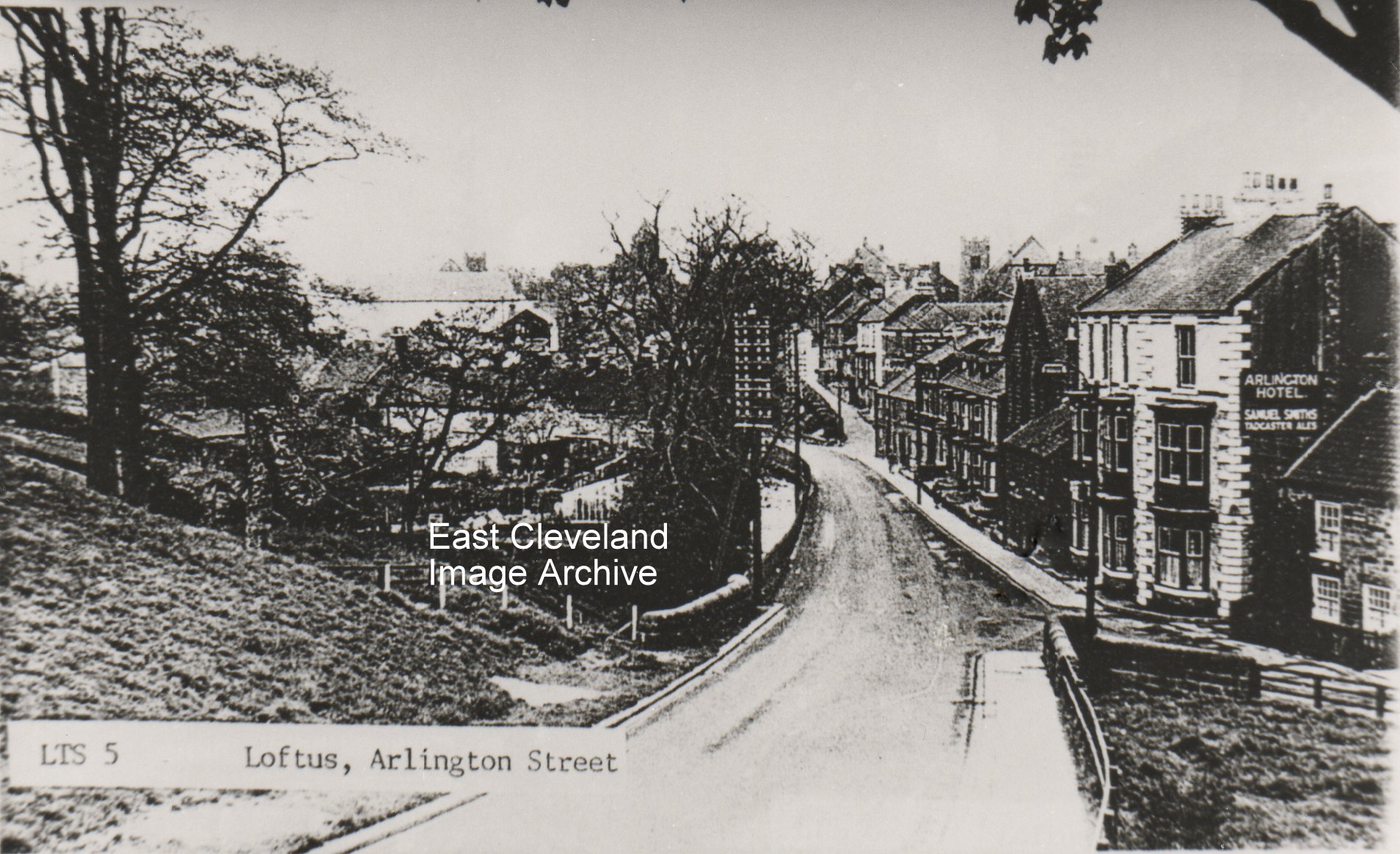 This postcard image presents a different view of Arlington Street taken from Chapel Bank; on the left hand side it shows the grassy bank and the beck that was piped when the estate was built. The right hand side, showing the entrance to East Crescent the triangular fenced/walled area was previously occupied by the Newton Memorial Chapel. 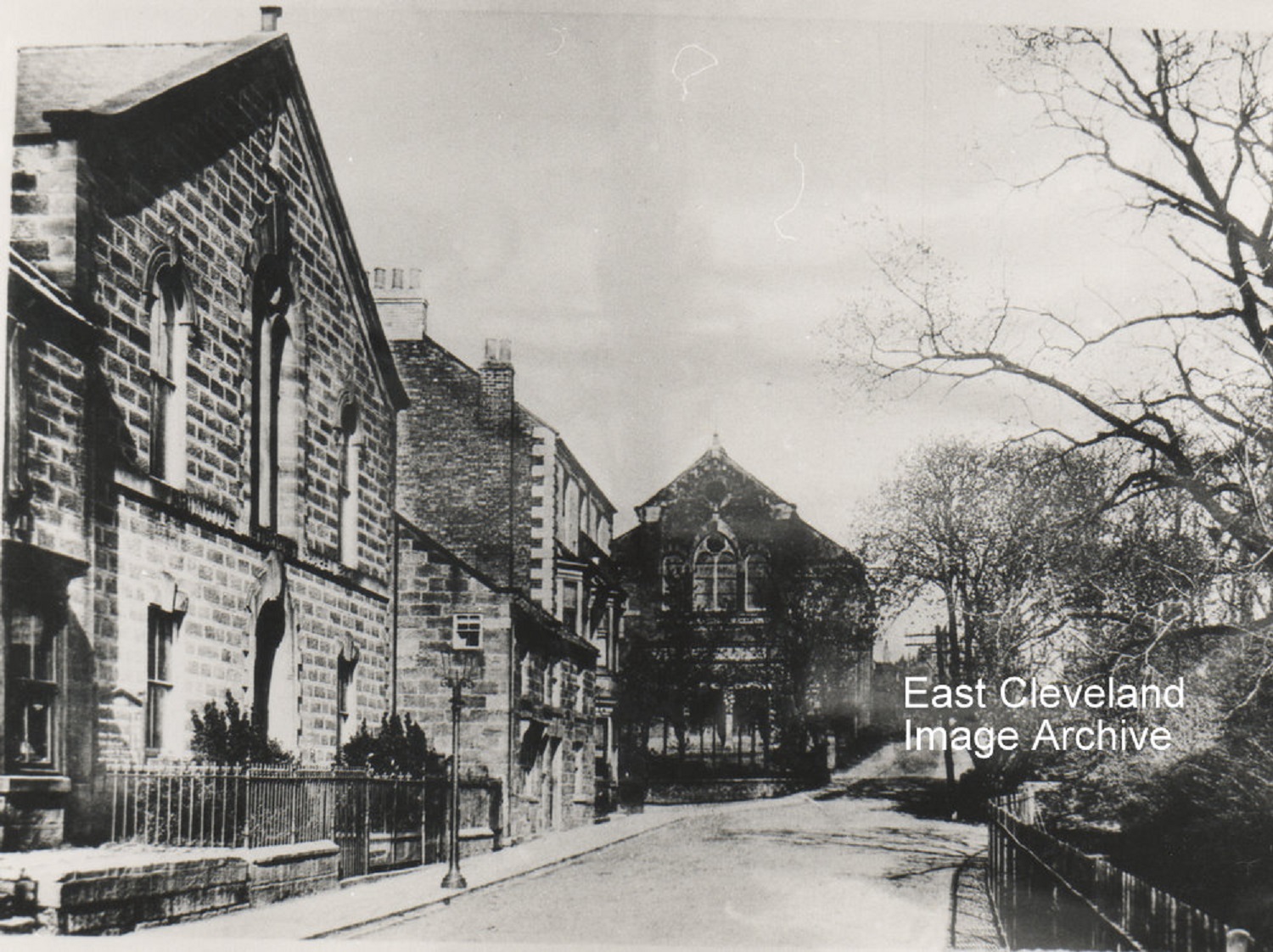 Arlington Street in winter sunshine, it shows clearly the two chapels; the Primitive Methodist on the left and the Wesleyan (Newton Memorial) on the hill. The Arlington Hotel is between them and couldn’t open until after 7 p.m. on Sunday evenings. The houses between the Arlington Chapel and the Hotel were demolished for the chapel hall to be built. Now the hall has been demolished and the chapel is no longer used. Image courtesy of Mrs Sakelaropoulos. 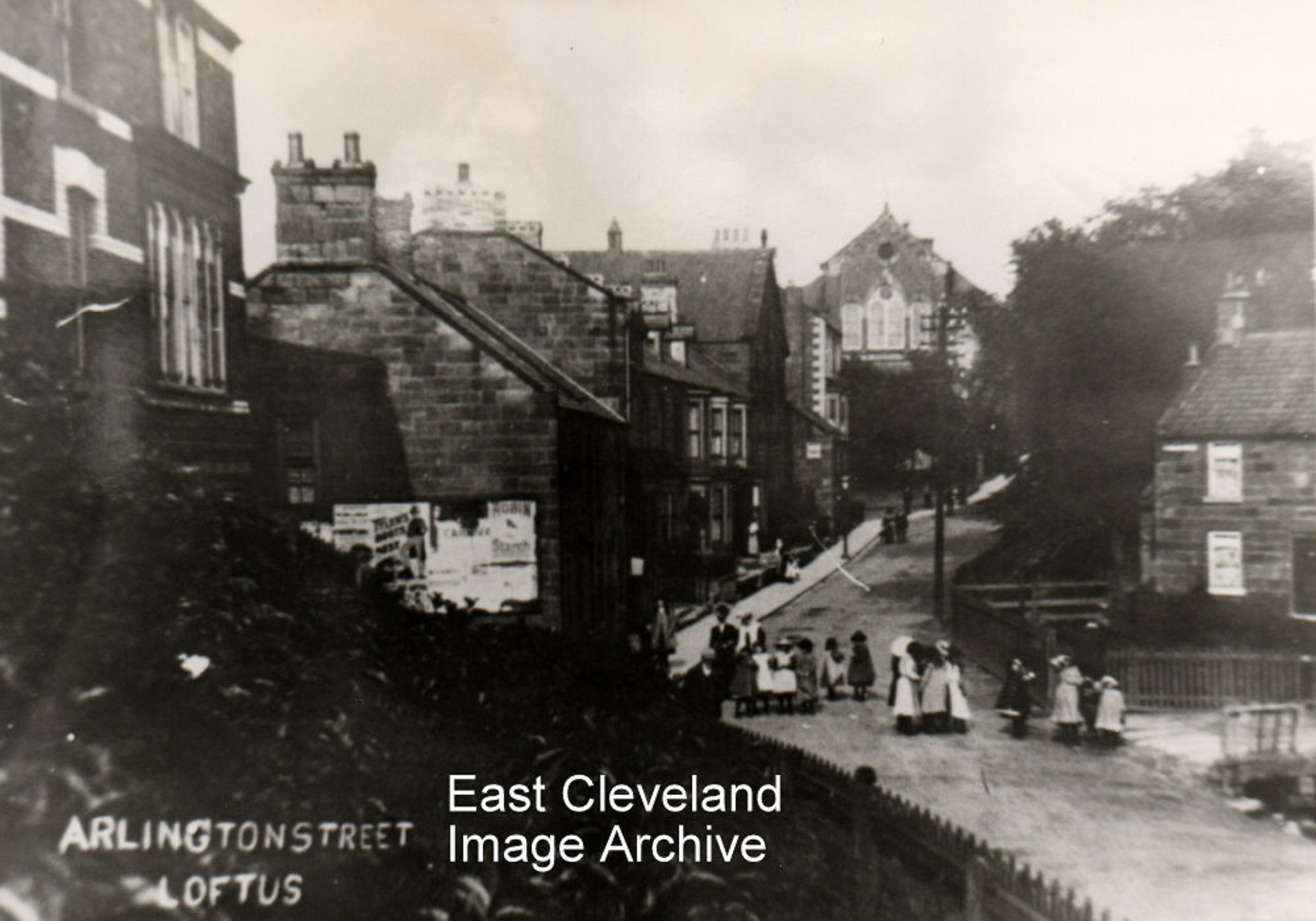 A rather big gathering on Arlington Street and the people all look to be dressed in their best could it be a Sunday, have they been or just coming home from church? The Newton Memorial Chapel in the background was destroyed by a bomb in World War II. 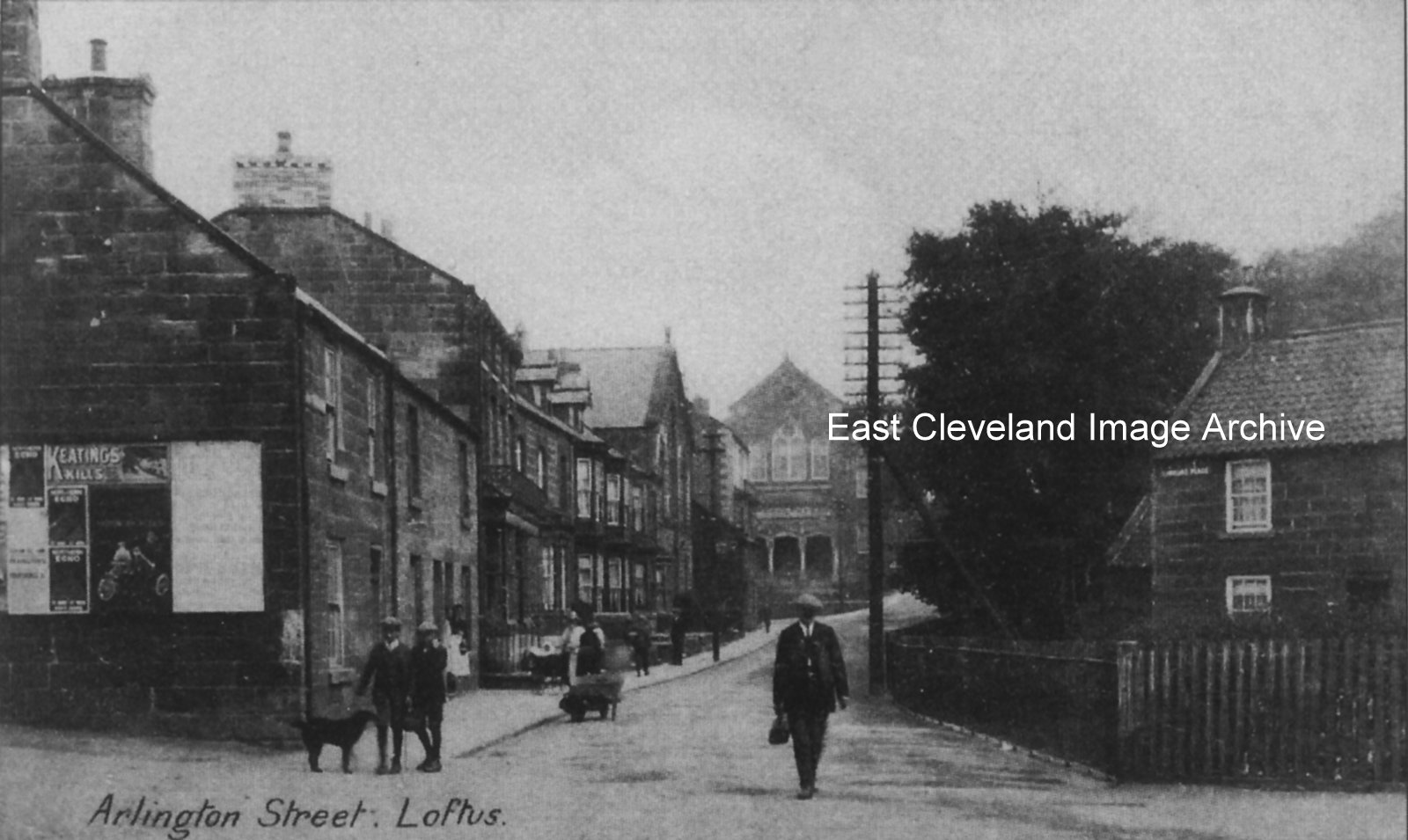 Another well photographed location, this view from a postcard included the information that the gentleman in the foreground was ‘Kind George’; so named as he was the Relieving Officer. Part of his duties included doling our parish relief. A road sweeper is busy in the gutter, hauling his barrow behind him; the billboard on the end of Springhead Terrace has long gone. The telephone pole jutting out onto the road (now where there is pavement) at the end of St Hilda’s Place, was the cause of many road accidents. Image courtesy of Loftus Town Crier and Jean Wiggins (information confirming from Jean Wiggins “Loftus in Old Picture Postcards”). 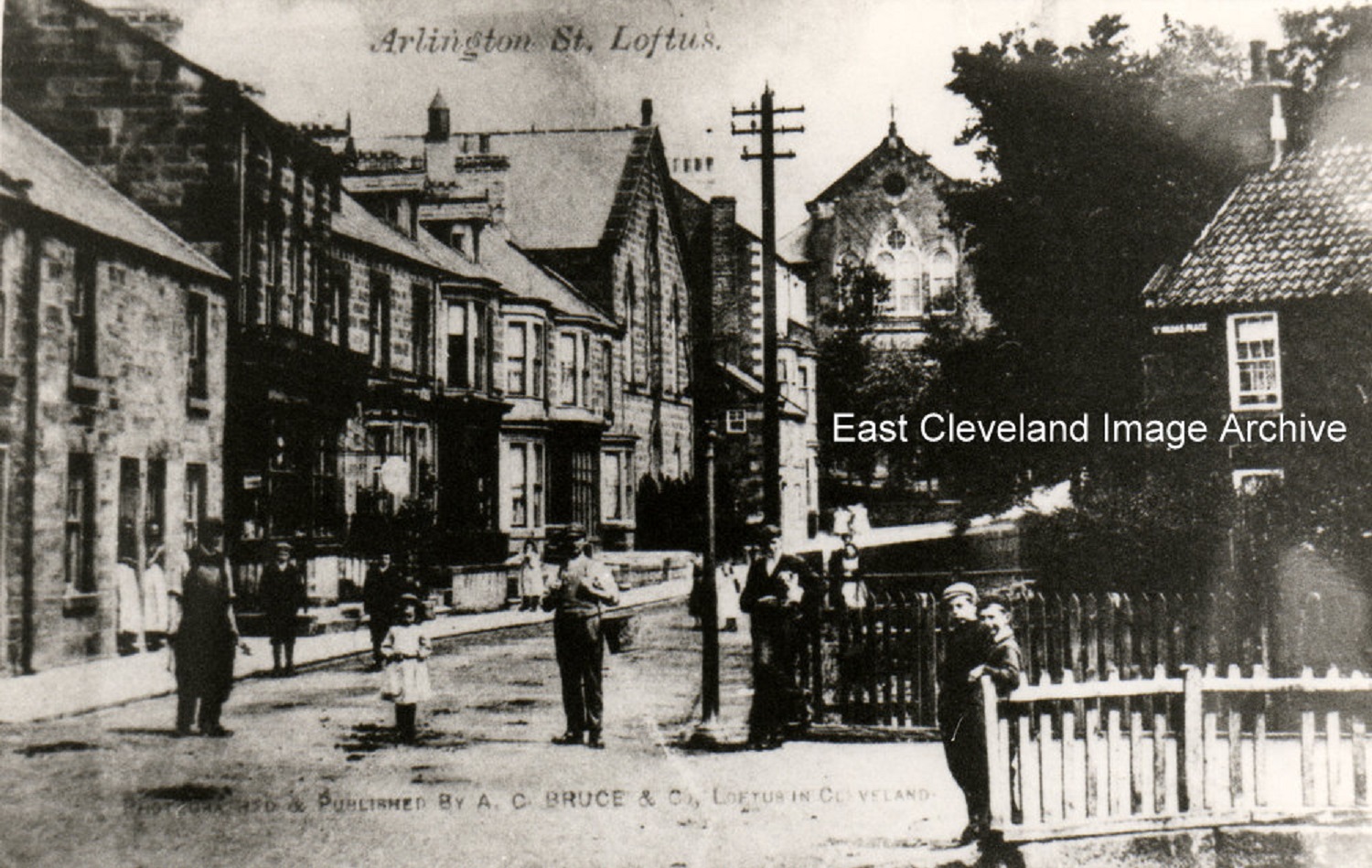 The posers are out in force again, the photograph (from a Bruce postcard view) shows Arlington Street and the entrance to St Hilda’s Place, these must be some of the older houses of Loftus. |
||
Recent Comments